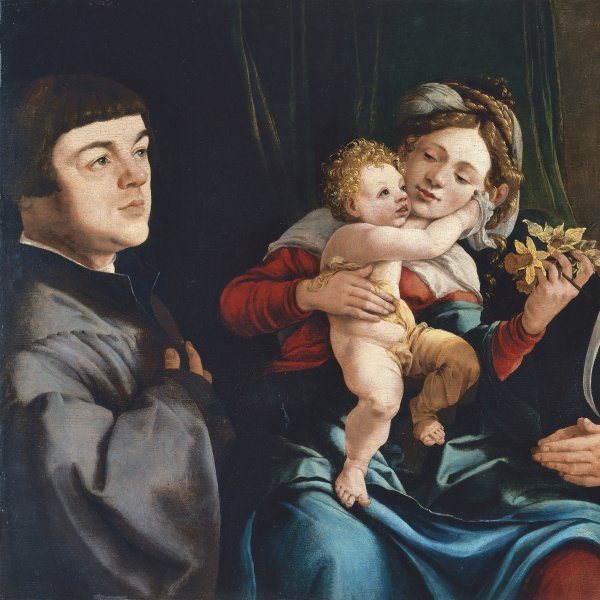Jan van Scorel
Schoorl, 1495-Utrecht, 1562
Jan van Scorel was born in Schoorl, a small town near Alkmaar in the northern Netherlands. He probably received his first training from the painter Cornelis Buys I in Alkmaar before moving to Amsterdam in 1512 where he entered the studio of Jacob Cornelisz. van Oostsanen as an apprentice. According to Van Mander, Van Scorel also trained with Jan Gossaert who was working in Utrecht from 1517. In 1519 Van Scorel embarked on a lengthy trip whose final destination was Venice, passing through Cologne, Speyer, Strasbourg, Basel, Nuremberg (where he met Dürer and studied his work), and Ratisbon. In 1520 he set out from Venice for the Holy Land, recording his impressions in a notebook of which some pages have survived. On his return from Jerusalem, Van Scorel remained for some time in Venice, studying the work of Giorgione and Palma Vecchio. In 1522 the Dutchman Adriaan Florensz. Boeyens was elected Pope Adrian VI and Van Scorel consequently moved to Rome where he was appointed superintendent of the Vatican collections. Van Mander states that during this period the artist studied classical ruins and sculpture as well as the work of Michelangelo and Raphael.
Van Scorel returned to the Low Countries in the summer of 1524 and settled in Utrecht where he became vicar of the church of Saint John and subsequently a canon. Apart from a trip to the southern Netherlands and France, he remained in Utrecht for the rest of his career and was one of the artists who most disseminated the Italian High Renaissance in Holland. Van Scorel was a highly regarded, prestigious artist in his own lifetime and ran an extremely active workshop. Among his pupils were some of the leading names of the following generation including Antonis Mor and Maerten van Heemskerk. Many of Van Scorel’s religious compositions, particularly his altarpieces, were destroyed during the iconoclastic riots.
Van Scorel returned to the Low Countries in the summer of 1524 and settled in Utrecht where he became vicar of the church of Saint John and subsequently a canon. Apart from a trip to the southern Netherlands and France, he remained in Utrecht for the rest of his career and was one of the artists who most disseminated the Italian High Renaissance in Holland. Van Scorel was a highly regarded, prestigious artist in his own lifetime and ran an extremely active workshop. Among his pupils were some of the leading names of the following generation including Antonis Mor and Maerten van Heemskerk. Many of Van Scorel’s religious compositions, particularly his altarpieces, were destroyed during the iconoclastic riots.





